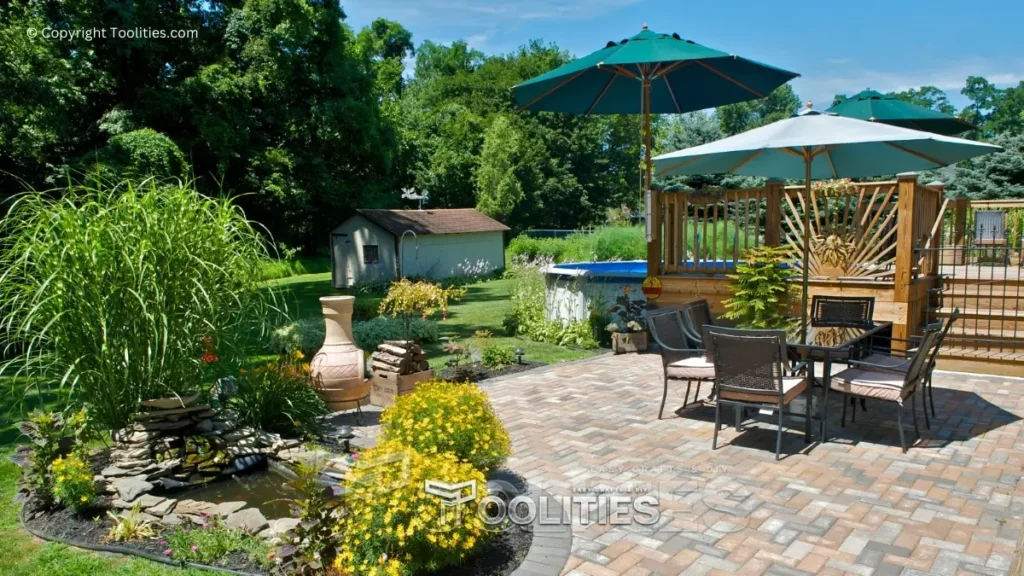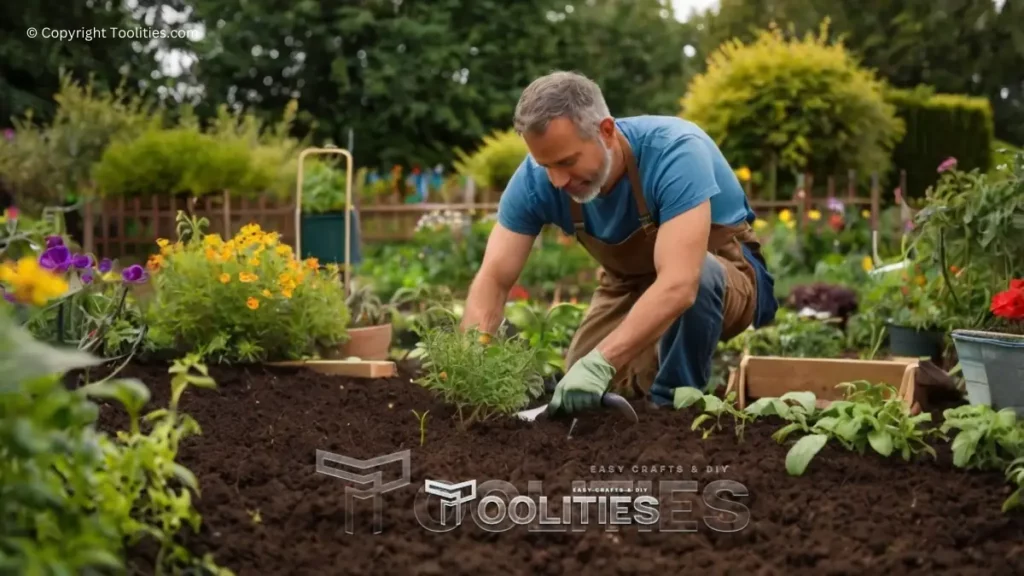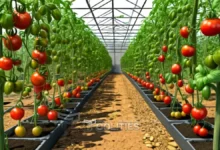7 Tips To Cultivate Your Garden On A Budget
Green Thumb? Check Out These 7 Budget-Friendly Gardening Tips!
Dreaming of a lush garden bursting with vibrant blooms and fresh vegetables, but finding your wallet a little light? Fear not, for the magic of gardening on a budget is within reach. Cultivate your garden on a budget with these 7 expert tips! Transform your outdoor space without breaking the bank. Start today!
In the realm where green thumbs meet lean pockets, there lies a treasure trove of possibilities waiting to be unearthed. So buckle up and get ready to embark on a thrifty yet rewarding journey into the world of affordable gardening.
Table of Contents
7 Tips to Cultivate Your Garden on a Budget
Picture this – rows of flowers swaying gently in the breeze, clusters of ripe tomatoes shimmering under the sunlight – all without breaking the bank. Yes, you heard it right. You can cultivate your own garden oasis while keeping those pennies pinched tight. From smart planning to innovative DIY solutions, there's a host of strategies at your disposal to nurture your little piece of paradise affordably.

So why wait? Let's delve into seven insightful tips that will have you sowing seeds of abundance without emptying your pockets. Join us as we uncover the secrets to cultivating a bountiful garden on a budget – because green thumbs shouldn't come with hefty price tags!
Planning Ahead
Before diving into your garden project, take the time to research and plan strategically. By doing so, you can make informed decisions that will help you stay within your budget while still creating a beautiful garden space. Consider factors such as the types of plants you want to grow, the condition of your soil, and the tools you'll need.
Creating a realistic budget is key to successfully cultivating your garden on a budget. Allocate funds for essentials like seeds, soil amendments, gardening tools, and any other materials required for your specific gardening needs. By planning out your expenses in advance, you can avoid overspending on unnecessary items and focus on what truly matters for nurturing your green oasis.
For example, if you're starting a vegetable garden, calculate how much soil and compost you'll need based on the size of your garden beds. Look for seed varieties that are not only suited to your growing zone but also offer good yields to maximize your investment. Investing in high-quality tools upfront may cost more initially but can save you money in the long run by being durable and efficient for years to come. Planning ahead ensures that every penny spent contributes effectively to the success of your garden without breaking the bank.
Maximizing Space For Gardening
When gardening in a limited space, getting creative with vertical gardening techniques can truly make a difference. Consider installing trellises or hanging planters to take advantage of unused vertical space. For example, planting vining vegetables like cucumbers or beans that naturally climb can free up ground space while still yielding bountiful harvests. This method not only maximizes your growing area but also adds a visual appeal to your garden.

Another effective way to optimize space is through companion planting. By strategically placing compatible plants together, you can encourage growth and deter pests naturally. For instance, pairing aromatic herbs like basil with tomatoes can improve the flavor of the tomatoes and repel insects harmful to both plants. Additionally, planting taller crops like corn next to shorter ones such as lettuce can provide shade and wind protection for delicate plants—all within the same area.
By incorporating these space-maximizing strategies into your gardening routine, you not only save on valuable real estate in your garden but also foster a harmonious ecosystem where plants work together efficiently. This approach not only benefits your budget by maximizing yields in confined areas but also creates a visually appealing and diverse garden that thrives despite spatial constraints.
DIY Solutions for a Budget-Friendly Garden
When it comes to cultivating your garden on a budget, getting creative with do-it-yourself (DIY) solutions can be both cost-effective and personally rewarding. Instead of purchasing expensive planters or trellises, consider repurposing household items to give your garden a unique touch while saving money. For example, old buckets can be painted and transformed into charming plant containers, adding character to your outdoor space without breaking the bank. Pallets are another versatile option that can be upcycled into vertical gardens or used as raised beds, providing an affordable yet stylish alternative to store-bought options.
In addition to utilizing everyday items in unconventional ways, DIY projects offer customization opportunities that cater to your specific gardening needs. By creating your own trellises using bamboo sticks or PVC pipes, you not only save on costs but also have the freedom to design structures that perfectly fit your garden layout. Personalizing garden decor through DIY endeavors not only adds a personal touch but also fosters a sense of pride in contributing to the overall aesthetics of your outdoor sanctuary.
Moreover, engaging in DIY solutions for your garden fosters sustainability by reducing waste and promoting resourcefulness. Repurposing materials not only minimizes expenses but also contributes to environmental conservation by giving new life to items that would otherwise end up in landfills. Embracing a mindset of creativity and innovation allows you to transform ordinary objects into functional and visually appealing elements within your garden, showcasing how ingenuity and frugality can go hand in hand in creating a beautiful outdoor space without exceeding your budget constraints.
Thrifty Plant Choices
When it comes to cultivating a garden on a budget, choosing the right plants can make a significant difference. Opting for low-maintenance plants that are well-suited to your region's climate not only saves you money but also reduces the time and effort required for upkeep. For example, native plants are often naturally resilient to local conditions, requiring less watering and fertilizing compared to exotic species. By selecting plants that thrive in your area without much intervention, you can cut down on both expenses and labor.
Additionally, propagating plants from cuttings or seeds is a budget-friendly way to expand your garden without breaking the bank. Many plants can be easily grown from cuttings taken from existing ones in your yard or obtained from friends or family. Similarly, starting plants from seeds is not only economical but also allows you to witness the full growth cycle of each plant, adding a rewarding aspect to your gardening experience. Whether you propagate herbs like mint and basil on your windowsill or grow flowering plants like marigolds and zinnias from seed packets, this DIY approach is both cost-effective and fulfilling.
By being strategic in your plant choices and propagation methods, you not only save money but also foster a deeper connection with your garden. Observing the growth of plants nurtured from tiny cuttings or seeds can be incredibly rewarding and instill a sense of pride in your green thumb abilities. Moreover, as these thrifty plant choices gradually transform into lush additions to your outdoor space, they serve as reminders of how smart planning and a modest investment can yield bountiful results in an affordable yet flourishing garden.
Water Conservation Techniques
To keep your garden flourishing without draining your budget, implementing water conservation techniques is key. One effective strategy is mulching — covering the soil around your plants with materials like straw, shredded leaves, or wood chips helps retain moisture, reducing the need for frequent watering. Mulch also acts as a natural barrier against weeds and regulates soil temperature, promoting plant health while cutting down on water usage.
Drip irrigation systems are another cost-effective solution to efficiently water your garden. By delivering small amounts of water directly to the base of plants, drip systems minimize evaporation and ensure water reaches roots where it’s needed most. This targeted approach not only conserves water but also prevents leaves from getting wet, reducing the risk of diseases spreading among your plants.
In addition to these methods, consider harvesting rainwater or repurposing household greywater for irrigation purposes. Installing a rain barrel under a downspout can collect rainwater that would otherwise go to waste, providing a free and sustainable source of hydration for your plants. Similarly, reusing dishwater or dehumidifier runoff is a practical way to cut back on utility bills while nourishing your garden responsibly. By incorporating these water-saving practices into your gardening routine, you’ll not only save money but also contribute to environmental sustainability through efficient resource management.
Garden Seasonal Maintenance Tips
To keep your garden thriving on a budget, regular maintenance is key. Pruning your plants not only promotes healthy growth but also prevents overcrowding and disease. Trim back unruly branches or dead foliage to allow sunlight and air to reach all parts of the plant. Composting kitchen scraps and yard waste creates nutrient-rich soil amendments for your garden, reducing the need for store-bought fertilizers. By recycling organic materials, you are not only saving money but also practicing eco-friendly gardening.
As the gardening season winds down, be on the lookout for end-of-season sales at nurseries and home improvement stores. This is the perfect time to stock up on discounted seeds, tools, pots, and other supplies for the next year's growing season. You might find last season's perennials being offered at a fraction of their original price, allowing you to expand your garden without blowing your budget. By planning ahead and taking advantage of these sales, you can set yourself up for success in cultivating a beautiful garden affordably.
Another critical aspect of seasonal maintenance is weeding. Removing unwanted plants helps prevent them from competing with your desired vegetation for space, nutrients, and water. Consider enlisting family members or organizing a friendly neighborhood garden cleanup day to make this task more enjoyable and efficient. By staying proactive with pruning, composting, weeding regularly throughout the year, you'll not only save money on costly treatments but also enjoy a healthier and more vibrant garden that reflects your dedication and green thumb prowess.
Wrapping Up
Cultivating a stunning garden on a budget is not just feasible but also gratifying with the right approach. By planning ahead and creating a realistic budget, maximizing space through vertical gardening techniques, opting for DIY solutions like repurposed planters, choosing thrifty plant varieties, implementing water conservation strategies, and staying on top of seasonal maintenance tasks, you can nurture a flourishing garden without breaking the bank.
Remember to take advantage of sales, end-of-season deals, and explore creative ways to make the most of your resources. With these tips in mind, you can enjoy a bountiful garden that not only enriches your surroundings but also aligns with your financial goals. Happy gardening! 😁🌲🌳

